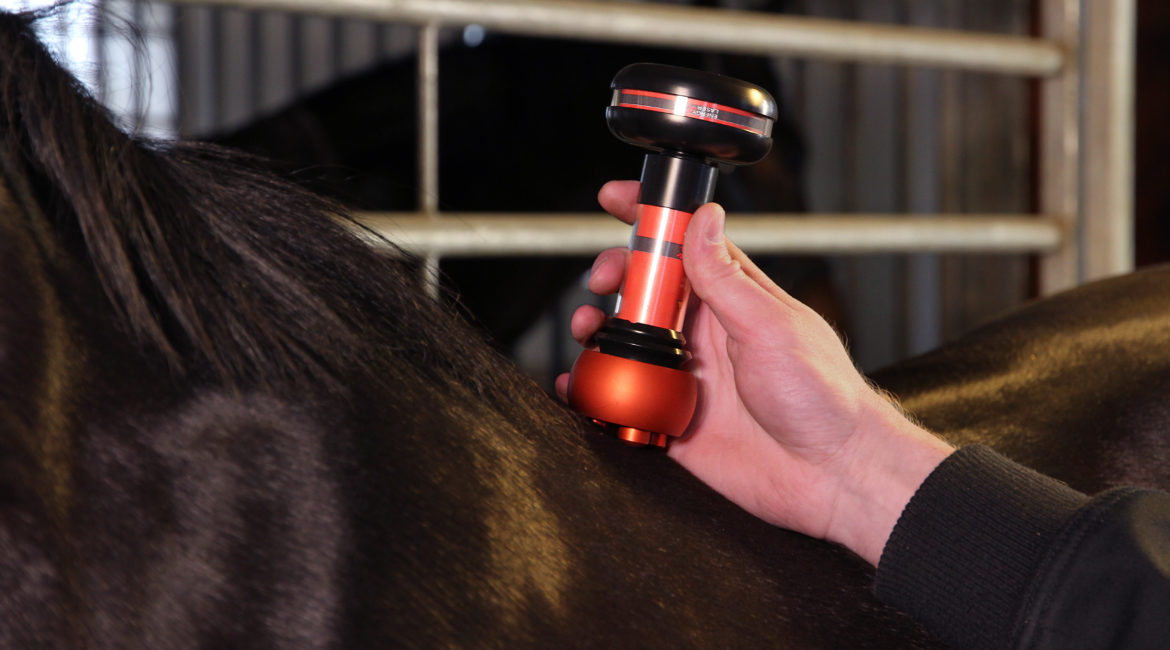Equine Therapy: Exactly How It Assists Build Self-confidence and Emotional Strength
Equine Therapy: Exactly How It Assists Build Self-confidence and Emotional Strength
Blog Article
Assessing the Performance of Laser Therapy in Horse Therapy for Injury Recovery
The analysis of laser therapy's performance in equine injury recovery rests on multiple aspects, including recuperation time, pain mitigation, and cells regrowth. Clinical studies suggest noteworthy enhancements in conditions like tendonitis and osteoarthritis, associated to improved mobile function and raised ATP manufacturing. Vets frequently observe exceptional results with laser therapy compared to traditional techniques, placing it as an important element in equine treatment. The necessity for constant surveillance and customized therapy plans can not be overemphasized. What certain professional evidence sustains these claims, and how do vets implement these protocols in technique?

Comprehending Laser Therapy
Laser therapy has actually become a critical tool in vet medication, particularly in the therapy of equine problems. Understood for its non-invasive nature and efficiency, laser therapy includes the application of certain wavelengths of light to boost cells repair and lower swelling. This healing technique is significantly favored for its capacity to increase the recovery process in steeds enduring from a selection of bone and joint injuries and persistent problems.
The key device behind laser treatment is its capability to boost cellular features. When laser light penetrates the skin, it is absorbed by mitochondria, the giant of cells, which results in increased production of adenosine triphosphate (ATP) This biochemical power increase assists in cellular repair work and regrowth. In addition, laser treatment advertises vasodilation, improving blood circulation and oxygen distribution to broken tissues, thus accelerating recovery.
In equine medication, laser treatment is specifically beneficial for conditions such as tendonitis, osteoarthritis, and injury recovery. The technique is admired for its pain-relieving residential properties, enabling horses to gain back wheelchair and feature more rapidly. Vets likewise appreciate its marginal adverse effects contrasted to various other treatment methods, making it a trusted and safe alternative for equine treatment.
Just How Laser Therapy Works
To recognize exactly how laser therapy works, it is vital to dig into the interaction in between light power and biological tissues. Laser therapy, additionally understood as Low-Level Laser Treatment (LLLT) or photobiomodulation, employs particular wavelengths of light to pass through tissues and boost cellular procedures. The system hinges on the absorption of photons by cell chromophores, mainly within the mitochondria, which are crucial for power production.
Upon absorption, these photons cause a series of biochemical modifications, boosting mitochondrial feature and leading to boosted adenosine triphosphate (ATP) production. This surge in ATP accelerates mobile metabolic rate, advertising tissue fixing and regrowth. In addition, laser therapy modulates inflammatory reactions by influencing cytokine degrees and minimizing oxidative stress and anxiety, therefore easing discomfort and swelling.
Another significant facet of laser therapy is its duty in improving microcirculation. The therapy promotes vasodilation, improving blood flow and oxygen distribution to damaged cells. This helps with the elimination of mobile particles and sustains the expansion of fibroblasts and collagen synthesis, crucial for wound recovery.
Professional Proof
The efficacy of laser treatment in equine therapy has been validated through different medical researches, showcasing its healing prospective throughout a variety of problems. A research study carried out by Turner et al. (2012) showed that equines treated with low-level laser treatment (LLLT) for ligament injuries displayed sped up recovery contrasted to those getting conventional treatments.
In a similar way, research by Johnson and colleagues (2015) focused on equine muscle injuries, disclosing that laser treatment significantly sped up muscle fiber regrowth and reduced muscle mass stiffness. These searchings for were substantiated by histological evaluations showing improved muscle tissue organization. Professional assessments have shown that laser treatment can ease persistent problems such as osteo arthritis. A research by Smith et al. (2018) reported that horses with osteoarthritic joints experienced notable pain alleviation and boosted variety of motion adhering to a program of laser treatment sessions.
Veterinarian Insights
Vet specialists have actually significantly identified the worth of laser therapy in equine treatment, mentioning read more both empirical proof and direct experience. Dr. Jane Smith, a leading equine vet, notes that laser treatment has revealed exceptional efficacy in lowering swelling and speeding up cells repair work.
Veterinarians additionally appreciate the flexibility of laser treatment. It can be utilized for a large array of conditions, from superficial wounds to much deeper musculoskeletal injuries. Dr. Emily Brown highlights its energy in dealing with conditions like tendonitis and osteo arthritis, where traditional treatments typically drop short. She explains that laser therapy can be customized to the specific needs of each steed, making sure optimum results.

Practical Factors To Consider
A crucial aspect of implementing laser therapy in equine therapy entails comprehending the functional considerations that guarantee its efficacy and safety and security. Firstly, it is crucial to select the appropriate laser device, as numerous types vary in wavelength, power, and infiltration depth. Vets must be fluent in these criteria to customize therapy protocols successfully per injury kind
Moreover, the regularity and duration of laser treatment sessions require cautious preparation to maximize restorative benefits while reducing any possible unfavorable effects. Regular tracking of the horse's feedback to therapy can guide necessary changes in the therapy routine. Establishing a secure and controlled environment during treatments is also necessary to avoid accidental exposure to laser emissions, which might hurt both the equine and the trainer.
Training and certification of workers administering laser therapy are extremely important to guarantee correct method and to promote safety criteria. Furthermore, keeping exact documents official source of each session, consisting of laser settings and observed end results, is vital for examining the general efficiency of the treatment and for making data-driven decisions.
Verdict
Laser treatment has actually arised as an effective method in equine injury rehabilitation, supplying considerable advantages in check this healing time, discomfort relief, and cells recovery. For optimum results, continuous tracking and individualized therapy methods remain necessary in leveraging the complete potential of laser treatment in equine treatment.
Report this page